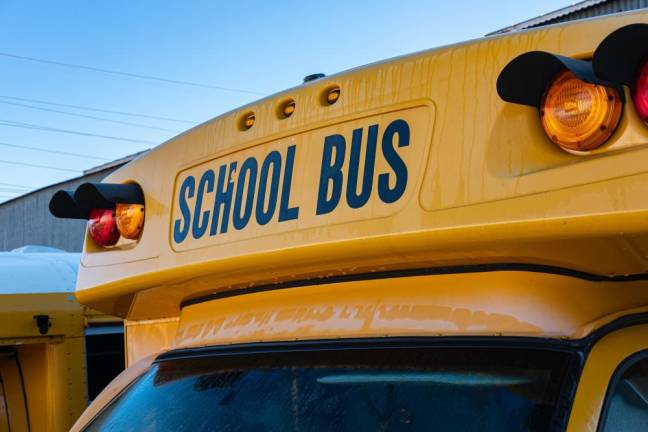School district looks at aging buses
Warwick. Nearly a quarter of the school bus fleet is over 10 years old while 43% of the vehicles have more than 100,000 miles.

At the Warwick Valley Central School District’s February 16 work session, Supervisor of Transportation Laura Chaluisan discussed the urgency of replacing some of the district’s school buses.
The district’s 70 vehicle fleet consists of 48 65-passenger buses; five 60-passenger buses; nine 20/30-passenger buses; five wheelchair buses; and three 9-passenger Suburbans.
While the transportation department hopes to invest in electric vehicles in the near future to comply with New York State and federal laws addressing climate change mitigation, it currently relies on gas- and propane-powered buses, no longer uses diesel-based vehicles.
There are seven buses that are 15 years old or older (10% of the fleet); 17 that are between the ages of 11 -14 (24%); and 46 vehicles that are between one and 10 years old (the majority of the vehicles, which represents 66%).
Chaluisan pointed out that aging buses are more susceptible to more and more frequent – and, thus, more costly – mechanical problems, as well as body rust.
Some of the age and/or mileage-related conditions that school buses are subject to include fuel tank issues and protective cage rust/rot, at a cost of $2,000 to replace.
Exhaust gas recirculation may fail, at a $3,000 replacement cost; turbocharge failure, ranging from $3,500 to 5,000 to replace; fuel injector failure, at a replacement cost of $5,000 - $6,000. The most costly fix of all is a transmission, at a whopping $8,000 for replacement.
Nearly a quarter of the district’s buses have more than 150,000 miles on them, while 43% of the fleet have more than 100,000 miles.
“We don’t run buses over 200,000 miles,” Chaluisan said.
And while, according to Tim Holmes, Assistant Superintendent for Business, while “the cost of buses has skyrocketed,” Chaluisan added that the cost of parts, supplies, and mechanics have gone up as well.
For buses that are 10 years old or more, or have more than 12,000 miles a year on them, the cost to maintain them is $3.10 per mile, or an annual cost of $37,200.
Buses that are less than 10 years old with about the same mileage cost $2.64 per mile, or $31,680 per year.
Warwick is about 160 square miles in terms of the area buses drive.
The transportation department has two buses on loan from NY Bus Sale and Leonard, due to some supply-chain related delays in delivery of four of the buses that the district purchased last year, two buses being out of service, and one that was “totaled” in an accident.
Chaluisan said the district always gets buses delivered in the summer, but it last summer’s delivery of new buses hasn’t happened yet.
Among the vehicles the district is looking at in order to update its fleet are two 65-passenger Blue Bird propane buses, at a cost of $168,917.58.
There’ll be “no additional cost to the taxpayers, because we’re using the reserve,” Holmes added, and the district will receive transportation aid from the state.
“Transportation Department mechanics continue to keep all our buses in top mechanical condition and have again achieved an outstanding Department of Transportation rating of 99.4 percent,” the district website notes. “Every bus in the fleet is inspected by the New York State Department of Transportation every six months, and serviced every 3,000 miles.”

